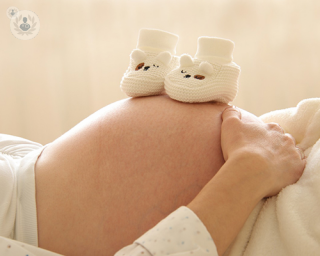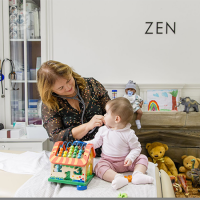Newborn physical examination
Dr Margarita Burmester - Paediatrics
Created on: 11-13-2012
Updated on: 01-10-2024
Edited by: Conor Dunworth
What is a newborn physical examination?
A complete physical examination is offered to all parents for their newborn baby within 72 hours of giving birth to check for signs of normal health and function. A physical examination of a baby is an important part of newborn care.

What does the examination consist of?
Typically, the examination looks for signs of problems or defects with the following:
- Eyes
- Skin
- Head and neck
- Face
- Abdomen
- Hips
- Genitals and anus
The baby’s reflexes, heartbeat, blood pressure, temperature and breathing rate are also checked and the weight and length are taken. The average weight of a baby is 7 pounds (3.2 kilograms) and the average length is 20 inches (51 centimetres).
The examination is usually carried out in the hospital before you go home and, ideally, the parents should be present during it. You will then be offered another examination after 6 to 8 weeks at your GP surgery, as some of the conditions that the examination screens for can take a while to develop.
Why is it done?
The aim of this is to spot any signs early so that the right treatment can be started as soon as possible. Most of the time, nothing unusual is found.
How is the examination done?
During the examination, your baby will undergo a thorough examination. Some parts of the examination may be slightly uncomfortable for your baby but will not cause any pain whatsoever. A specialist will:
- Look into your baby’s eyes with a torch to check they are moving properly and identify any signs of cataracts.
- Examine the hips to check how the joints are and if developmental dysplasia of the hip (DDH) is present.
- Listen to your baby’s heart using a stethoscope to check for heart murmurs.
- Check your baby boy’s testicles to see if they have descended into the scrotum. If the testicles don’t descend properly, which only happens in about 1 in 100 boys, then it can cause fertility problems in the future if it isn’t treated.
When will the results be ready?
The specialist will give you the results straight away. If the health professional notices something unusual or a possible problem, then they may refer your baby for further tests and this will be discussed with you.
All the results will be recorded in your baby’s personal child health record (PCHR). This is a small red book that is given to you after your baby is born and is commonly referred to simply as the “red book”.
Who carries out the examination?
This could be a doctor, nurse, midwife or anyone who is trained to do the examination.









